 |
 |
 |
| |
Lack of metabolic abnormalities and mitochondrial toxicity with enfuvirtide (T-20):
a double-blind, placebo-controlled, crossover study with random sequence assignation in healthy adult volunteers
|
| |
| |
Reported by Jules Levin
9th Intl Workshop on Adverse Drug Reactions and Lipodystrophy in HIV
July 2007, Sydney, Australia
MC Villarroel, E Martinez, N Riba, A Leon, M Manrique,
M Larrousse, JL Blanco, J Mallolas, X Carne, JM Gatell
Hospital Clinic, University of Barcelona
Barcelona, SPAIN
BACKGROUND
Some NRTI and PI have been associated with mitochondrial toxicity that may induce organ-specific diseases including lipoatrophy and metabolic abnormalities such as hyperlipidemia and insulin resistance that result in an increased risk for cardiovascular disease.
Enfuvirtide (T-20) is the first fusion inhibitor available for salvage combination therapy. Local reactions at the injection site have represented its major toxicity. No major systemic adverse effects have been reported so far.
Because the target and the chemical structure of enfuvirtide are different from those ones of the NRTI and PI, we hypothesized that enfuvirtide therapy would not trigger mitochondrial and metabolic toxicities associated with some NRTI and PI.
AUTHOR CONCLUSION
The administration of short-term enfuvirtide to healthy volunteers was not associated with lipid or glucose abnormalities or mitochondrial toxicity.
Overall Safety
Blood cells and chemistry and urine chemistry were within normal ranges and serologies for HIV and hepatitis B and C, and screening for abuse drugs were negative for all volunteers that completed the study.
Injection site reactions were the most common adverse events during the study (n=125, 88%), but all of them mild.
There were 17 (12%) adverse events other than injection site reactions, including headache, odinophagia and other minor flu-like symptoms.
None of adverse events led to drug discontinuation or required any intervention.
PARTICIPANTS
Eligible volunteers had to be males between 18 and 45 years, without a history of drug abuse, and without abnormal blood cell and chemistry tests at entry. Negative plasma serologies for HIV, hepatitis B and C viruses and lack of detection of abuse drugs in urine were also required at entry.
Written informed consent was obtained from all eligible volunteers before selection visit.
Volunteers were randomized in a 1:1 fashion to receive one of the following sequences: enfuvirtide+placebo or placebo+enfuvirtide.
The study was done at the Phase I Unit of Hospital Clínic (Barcelona, Spain).
DESIGN
Volunteers recd WHO diets consisting of 50-60% carbohydrates, 30-50% fat and 10-15% protein. Medication (T20) administered sc every 12 hrs at hospital. Fasting blood analyses included total cholesterol, OGTT, TG, HDL & LDL cholsesterol, PBMC mtDNA.
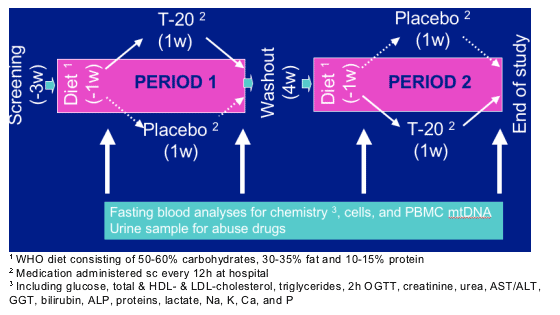
OUTCOMES
Major outcome: change in fasting plasma total cholesterol.
Secondary outcomes were changes in LDL-cholesterol, HDL-cholesterol, triglycerides, oral glucose tolerance test, lactate, and mitochondrial DNA.
Safety end-points included any clinical adverse events or abnormal laboratory tests. The adverse events were graded according to the World Health Organization score. Causality was assessed following a standard algorithm.
Injection site reactions were particularly assessed according to persistent pain and discomfort at the injection site, size of the indurations and erythema.
Statistical analysis
Available data suggest that the intraindividual variability of fasting normal plasma total cholesterol is expected to be lower than 10%. Therefore, we assumed that an increase equal to or higher than 25 mg/dL of the total cholesterol in persons with normal plasma values would be considered as an evidence of a real increase. We estimated that 12 volunteers would be needed to detect an increase in fasting plasma total cholesterol ≥ 25 mg/dL with a one-side alpha of 0.025 and a power of 80%.
Mean and standard deviation were used to report normally distributed variables. In case of non-normal distribution we used median and interquartile range. A t-test was used to assess any carryover effect, and an ANOVA test to evaluate the effects of the period, sequence and treatment.
All statistical analyses were done with the STATA package (StataCorp 2005. Release 9.2. College Station, TX).
STUDY POPULATION
202 candidates were invited to participate in the study.
77 received verbal information about the study.
36 accepted to come for the screening visit.
22 finally came. Five volunteers were excluded at the screening visit for any of the following reasons: psychiatric illness (n=1), evidence of drug abuse (n=2), abnormal total cholesterol (n=1), and abnormal bilirubin (n=1).
17 volunteers were included in the study.
15 received at least one dose of study medication and these volunteers were evaluated for safety.
12 volunteers completed the study with 100% compliance and they were evaluated for efficacy.
RESULTS
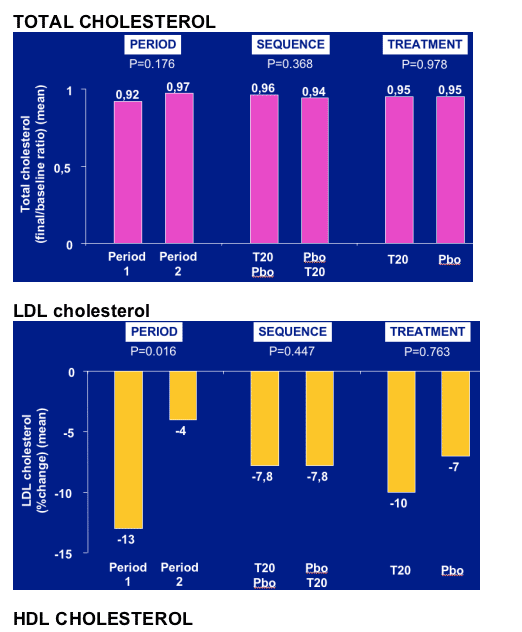
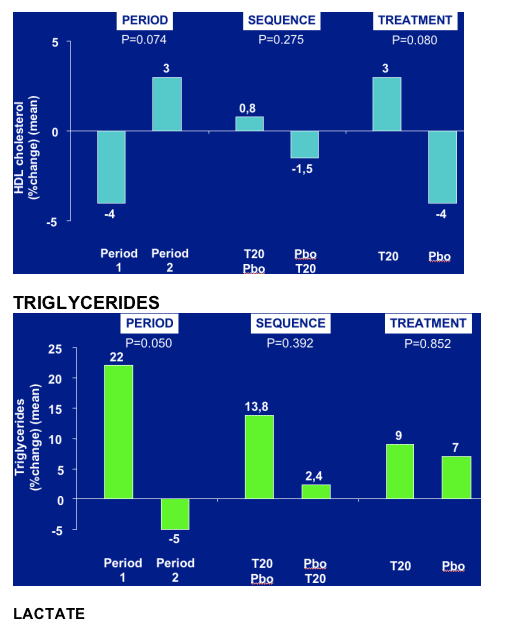
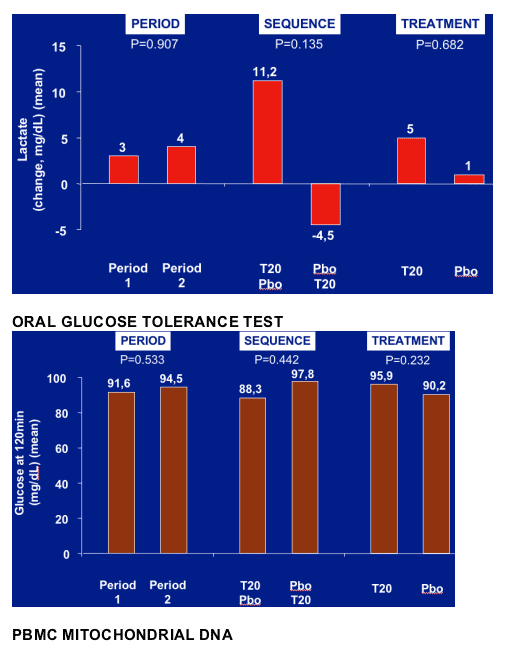
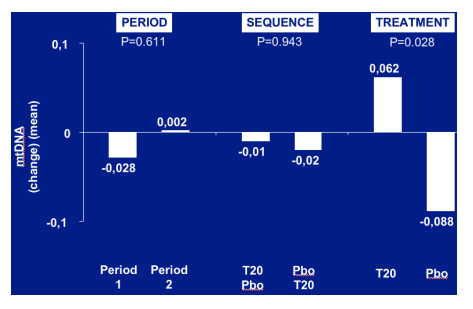
|
| |
|
 |
 |
|
|